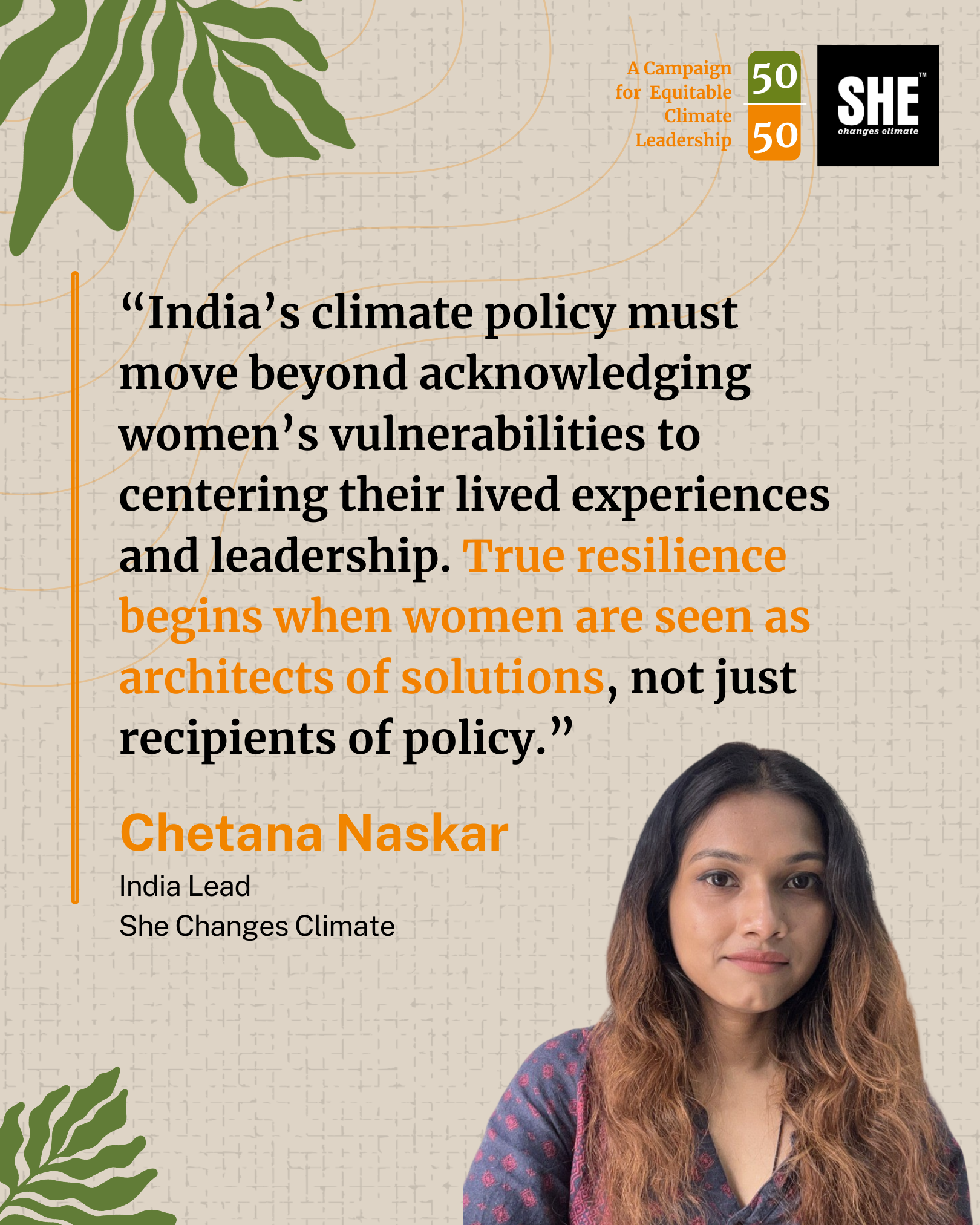In women’s leadership lies the answer to India’s climate strategy
Because action, not just intent, leads to impact
In the forest belt of Odisha, a state in India’s east, a group of women is building their vision into “dream maps”, laying the foundation to manage, restore and protect their land against climate change.
Traditionally engaged in farming, foraging and aquaculture, these women have been surveying and mapping their shrinking resources—forests, streams, agricultural and pastoral lands that make up the commons, traditionally managed by the community. Dream maps are their vision of an ideal village—one built on the power of collective knowledge and lived experience.
The maps are more than drawings. They are a missing blueprint for climate planning. These women and their knowledge of water, soil, and the patterns of disaster are deep, local, and tested. Yet, when India sits down to decide its national climate strategy, voices like theirs rarely make it into the room.
“Women and marginalised communities have differential adaptation and mitigation capacities due to pre-existing socio-cultural, economic, and political inequities, as well as limited access to vital resources. The current climate policies overlook these structural gaps. They are generically designed, with a larger focus on the country’s economic growth,” says Dr Swayamprabha Das, the Associate Vice President and Lead, Policy Research & Engagement at Development Alternatives.
Her reminder is timely as India relooks at its climate commitments.
The shift to a gender-responsive climate policy
India is in the midst of revisiting its Nationally Determined Contributions (NDCs) and preparing to launch its first-ever National Adaptation Plan (NAP), which will guide how the country responds to rising temperatures, floods and droughts.
Both are country-specific frameworks under the Paris Agreement. All countries are required to revisit their NDCs—national plans to reduce emissions and adapt to climate change—every five years from 2020.
Both are opportunities, but they also raise a defining question: What does meaningful integration of gender into climate policy look like?
As Chetana Naskar, the India Lead at SHE Changes Climate, notes, “India’s climate policy must move beyond acknowledging women’s vulnerabilities to centering their lived experiences and leadership. True resilience begins when women are seen as architects of solutions, not just recipients of policy.”
Bridging the data gap
Climate policy, one that is rooted in understanding how climate change affects women and men differently, needs not just ideas, but information.
Without sex-disaggregated data, women’s leadership and losses vanish from climate ledgers. Data is not decoration. It decides who gets funded, trained and even heard.
India is well-positioned to bridge this data gap, leveraging its existing, strong data collection mechanisms such as the Census, National Family Health Survey (NFHS) and others that already monitor gendered indicators for health, work and welfare.
By integrating these with climate data sets, India could show how emerging economies measure resilience with precision and thus close one of the big evidence gaps in policymaking.
Who speaks on climate?
When delegations arrive at international climate conferences, men still dominate the tables. Despite being on the frontlines of climate change, women are missing in decision-making positions. At COP29, women made up roughly a third of India’s delegation.
This absence matters. “If you are not including fifty per cent of the population’s voices, needs and leadership into the growth project, you are overlooking half the solution. At this pace, true equity will take 143 years—a timeline unfit for a planet on a deadline,” said Mamta Borgoyary, Executive Director, SHE Changes Climate.
The answers close to home
The good news is that models exist in the neighbourhood and within states. In Khulna district of Bangladesh, where men migrate, women take over critical roles in farming, fishing and sustaining communities in the face of adversity. In Nepal, women are leading resource management and climate planning through ‘Local Adaptation Plans of Action’.
And in Odisha’s extreme weather event evacuation systems and women-friendly shelters lies a shining local example of how gender-sensitive policies can be life-saving. “It is time to move women-led climate solutions from the margins to the mainstream,” says Dr. Sanjay Vashist of the Climate Action Network South Asia (CANSA).
From pilots and projects to solutions of scale
India’s strong network of women’s collectives has long been a breeding ground for leadership, but a project-based approach has limited their scalability.
The solution lies in harnessing and scaling these efforts into cooperatives with systemic financial support, mentorship, and capacity-building. But even mentorship needs reimagining—“not just as guidance or instruction but as a way of helping communities organise their thoughts, resources, and purpose,” as underlined by Ruchi Chaudhary from CANSA.
As Chetana Naskar emphasises, none of this is possible without equitable climate finance directly benefitting women and marginalised communities at the grassroots. Redirecting climate finance to women-led and gender-responsive initiatives is not philanthropy. It’s a smart climate strategy.
From policy to practice
India’s gender-climate challenge is not just about adding women to existing systems; it’s about rebuilding systems to value what women already do.
As India prepares to launch its first NAP and revise its NDCs, parity in participation, finance, and policy power is no longer an ambition—it is the bare minimum.
50/50, a campaign for equitable climate leadership, is demanding more than just acknowledgement. We are calling for Equal Participation, Equitable Investment and Equal Policy Power. Read more about the campaign here


